A reflection on the 20th president of Hamline University, Dr. Fayneese Miller
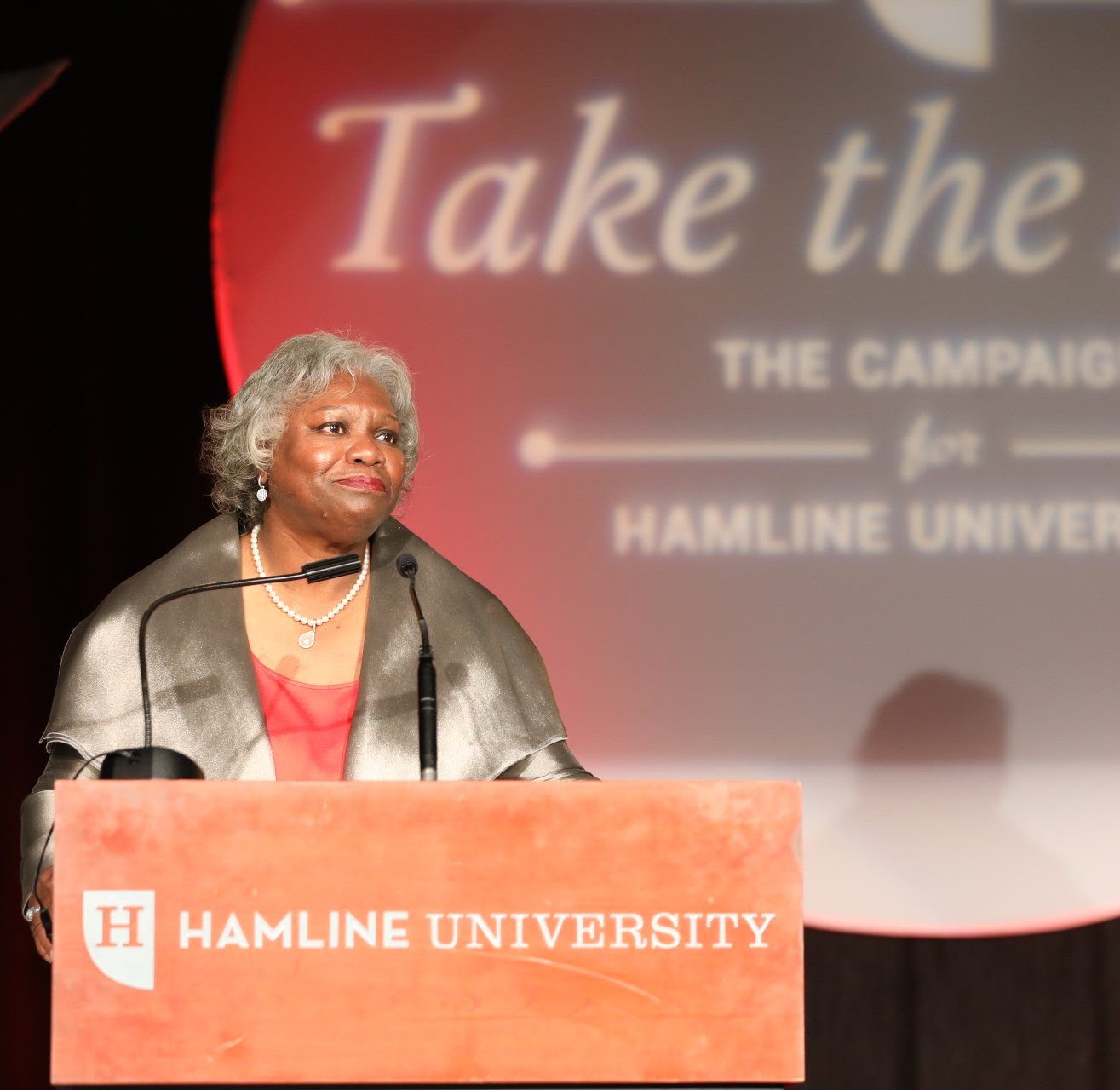
This article was previously published in print on Dec. 05, 2023.
Dr. Fayneese Miller has made her mark in the eight years she has served as President of Hamline University. As the institution’s 20th president, she has seen Hamline through a national controversy that some — including the New York Times — have implied was the catalyst for her retirement. Despite a tumultuous presidency that has varied in popularity amongst the Hamline community, Miller hopes that her legacy will be remembered as more than the events and fallout of last year.
Miller made history as Hamline’s first Black and second female president, and she has left distinct impressions on the university in the past eight and a half years as a uniquely student-engaged president. Her life and earlier career as a trailblazer for racial equity have influenced Hamline’s identity as an institution where advocacy is encouraged, and her priority for philanthropy has resulted in the success of the Take the Lead campaign’s fundraising efforts, which currently total $120 million. Despite the faculty majority voting for Miller to resign this past spring — largely based on the understanding that she had enabled the violation of an adjunct’s academic freedom — the president maintains that her commitment to academic freedom has always been strong. Though the community backlash has strained her and her position, Miller maintains that it does not define her time at Hamline University or her decision to leave.
Since her early education, Miller was hyper aware of her “onliness.” As one of few Black students in a white high school in Danville, Va., Miller knew that there were people who were uncomfortable with her success and with her roles in what had previously been exclusively white spaces. Knowing she had a right to be in those spaces gave her the confidence to brave those difficult circumstances and continue to take up space she knew she deserved.
“You have to figure out, ‘How do you survive in those environments when you’re the only one … and you know you belong, but there are others who don’t want you to feel as though you belong?’ I’m used to it, but it is always a challenge, no matter how much you’re used to it,” Miller said.
At Brown University, Miller was the associate professor of education, director of Brown’s Center for the Study of Race and Ethnicity and was named coordinator of the ethnic studies concentration when the university first introduced it. In these roles at Brown, Miller was already prioritizing students and platforming them with programs like the Research Apprenticeship program she started as a way for high school students to be mentored by students from Brown, showing kids from all walks of life that they could thrive in college.
Miller brought that care and attention to students in her role as professor and dean of the College of Education and Social Services at the University of Vermont, all experiences that greatly informed her presidency at Hamline where her connection with students grew to new depths. At Hamline, Miller hoped to empower students the way she had felt empowered as a young student.
“I understand ‘onliness’ and she understands ‘onliness’ because we were often the only black women—the only black person—in any situation,” Miller said in reference to Hamline Trustee Denise Holloman, one of her fellow speakers at the President’s Celebration Dinner on Oct. 12, 2023.
“We were it … We made it through: we had those communities that supported us. We had those people we could turn to. We had people who believed in us. And that’s what I’ve tried to do as the president of Hamline University: to believe in every member of this community.”
In August of 2017, the American Association of Colleges and Universities (AAC&U) appointed Hamline as one of the first Truth, Racial Healing and Transformation (TRHT) campuses. As Miller’s career included many leadership roles related to examining race and ethnicity in an academic landscape she had an understanding of how the appointment could make a difference for our campus.
“The reason why it was, in my opinion, important for us to get that and be identified [as a TRHT campus] is because before we got that grant, Philando Castile had been murdered, and we on this campus were grappling with that and [asking], ‘how do we deal with issues like this: issues of race, issues of class?” Miller said.
At the time of the appointment, no one was heading the office of Inclusive Excellence. The following year, David Everett joined Hamline’s administration as the school’s first Associate Vice President of Inclusive Excellence.
Despite the progress of building the office of Inclusive Excellence, Miller sees that as a place the university still has room to grow.
“I do think that we still have to think about how to better integrate [the office of Inclusive Excellence] into the very fabric of the institution … We probably need to rethink that structure,” Miller said.
President Miller has led with an effort towards compassion and care throughout her eight years. Building and maintaining relationships with students has been a defining priority of her presidency, and for all eight years, Miller has made an effort to be present at every student event she has been invited to. For many years, the winning Homecoming royalty was invited to eat dinner with Fayneese Miller at her home, and she was also involved in homecoming activities by judging the lip syncing contest and even leading a Piper March to the football game to express school spirit in 2017, a moment she recalls as a highlight of her time at Hamline.
“Except when you line up with students and you’ve got the Piper leading the way to the football game and you get to dance over [to the game], I mean, when can you be a kid again, except in instances like that?” Miller said. “So that’s been, I would say, one of the highlights of my presidency is the students. I absolutely love the students here at Hamline.”
This connection with campus and its members sprouted in Miller’s first term. She realized early on in her time at Hamline that her relationship with students would be crucial.
“Hutton was packed with students [for her installation ceremony], and that’s when I realized this relationship was going to be something different than any relationship I’ve ever had with students: that I needed to see the students,” Miller said. “I needed to hear the students because they were concerned about the direction in which the institution was going. That was a defining moment for me.” In her third year, Miller was a large part of banning smoking on campus and emphasized her desire for students to be comfortable and safe on campus.
“As a mother, this concerns me, because I see every student at Hamline as mine,” Miller told The Oracle in 2017. “I want them to choose life. I am focusing on life deliberately because I want all members of this community to have long lives.”
Miller’s passion for students’ wellbeing is well documented. While her era at Hamline steadily approaches its end, she continues to hold the relationships she has had with students dear.

President Miller succeeded former Hamline president, Dr. Linda Hanson. Hanson’s 10 years as president saw the dawn of monumental changes for the university, and Miller saw many of those changes take effect in her early years as president, including the unionization of Hamline’s adjunct professors and the merger of Hamline’s law school with William Mitchell to form Mitchell-Hamline School of Law.
According to Miller, she was told in the interview process that the university faced a $127,000 budget deficit before she arrived on campus to learn that the actual deficit was closer to $4 million.
“How you get from $127,000 to close to $4 million is concerning to me,” Miller said. “So my job, actually, over the years was really doing deep dives into the budget to try and understand how we were putting our budgets together: whether we were dealing with real numbers, rather than ‘what we’d like’ numbers.”
With an eye on balancing the budget, Miller faced many challenging decisions in her first year.
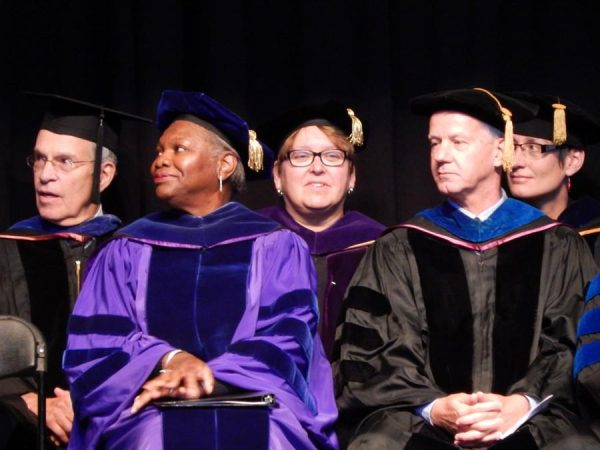
Although Hamline’s adjunct faculty had already unionized under SEIU Local 284 a year before Miller’s inauguration, the first union contract was negotiated throughout the fall semester of 2015. When a contract was agreed upon after months of negotiations culminated in a final, 16-hour deliberation, many adjuncts felt a lack of support from the university.
Dr. David R. Weiss, then an adjunct professor at Hamline and a Union Steward involved in the negotiations wrote extensively about his own frustrations throughout the process.
“Our [bargaining] team, from the first session of training to the final exasperation at the edge of tentative agreement, had hoped to meet in the administration team willing and imaginative partners in thinking outside the frame toward a future for higher education where the affordability of teaching excellence does not hinge on the exploitation of adjunct faculty,” Weiss wrote in a post on his personal website on Jan. 22, 2016. “We did not meet that team. Ever. Nonetheless, our first contract, hard-won, is a first step toward justice. And the first step is often the most difficult.”
According to Miller, dissatisfaction is unavoidable, and that negotiating parties, “Don’t always get what they want, but that’s the reason why you negotiate. You try to come to some sort of understanding that all parties can live with,” Miller said.
In both early and current negotiations, Miller says her priority is the overall wellbeing of the university.
“When you’re dealing with contracts you’re always gonna have people that are not gonna be happy with what they get … you always want to do something that’s going to be the right thing to do, and the right thing may not seem right for everyone,” Miller said. “But you always try to do the right thing and respect the people with whom you’re negotiating, as well as respect the institution that you’re representing.”
Still, Miller bristled at the implication that Hamline’s relationship with adjunct faculty is unfair.
“We’ve been using adjuncts for many, many years,” Miller said. “Most institutions do. You’ve never heard of us abusing an adjunct on campus. At least I haven’t heard of it.”
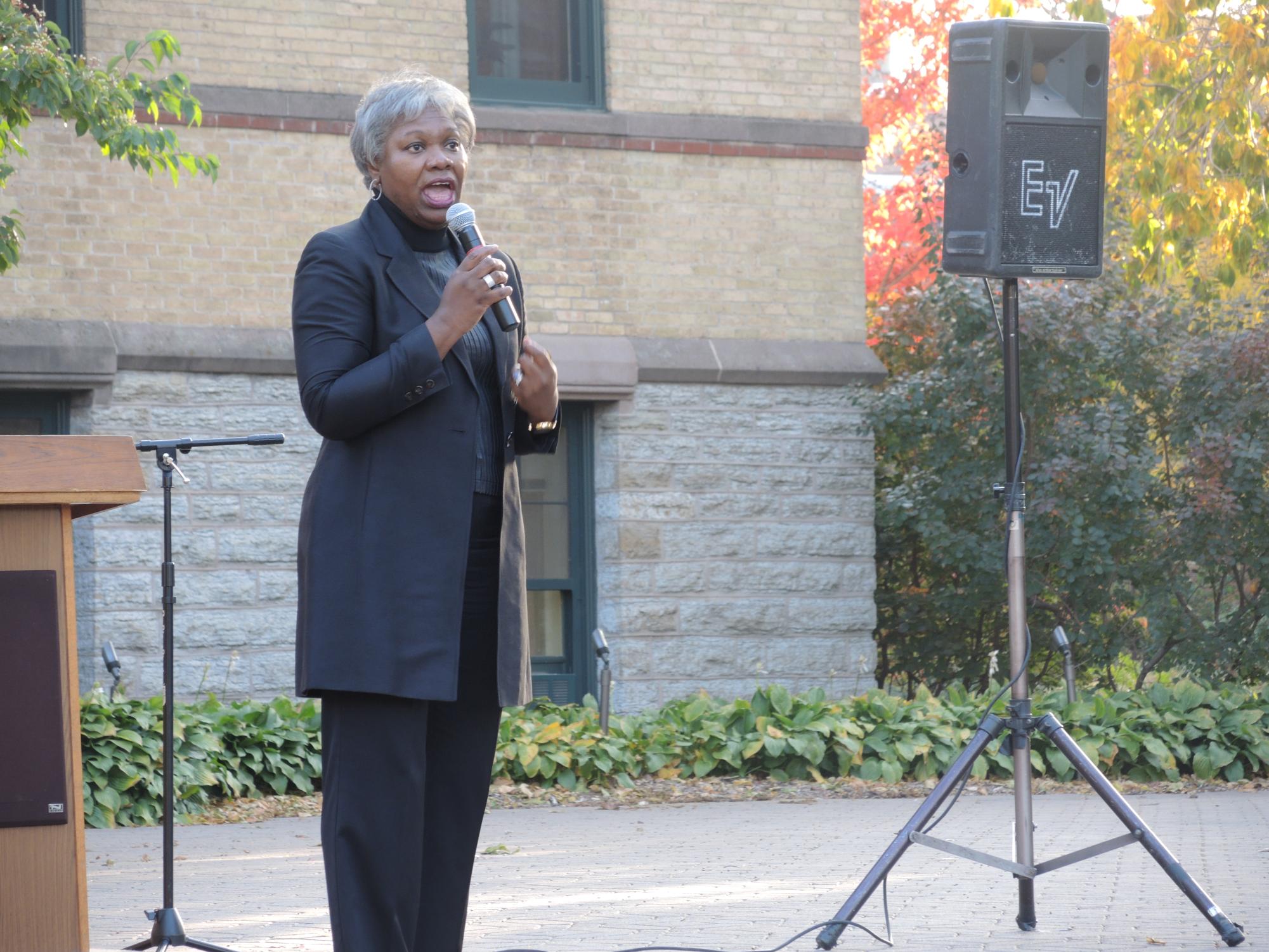
Throughout the past decade, the Hamline community has been vocal about creating better accessibility on our campus. Whether it is in regard to more physical accessibility to buildings, gender inclusive options for restrooms or campus resources, inclusivity and accessibility have progressed but still face criticism for being insufficient.
In 2015, The Oracle published a letter to the editor from Josh Melvin, a 2011 Hamline alumnus who had faced difficulty with accessibility on campus and hoped that “newly elected President [Miller] will help students with disabilities on campus,” Melvin wrote in the letter.
President Miller has seen the university through some of its progress, but she is aware of the shortcomings our campus still grapples with.
“It’s very important to me that we be an inclusive institution in all possible ways and it’s something that if I could say is incomplete for me, that would be it,” Miller said. “We have buildings on our campus that were built without thinking of the future. That’s the reality.”
This conclusion does not settle easily for Miller.
“I would say that would be my biggest regret, is not being able to make this campus as accessible as it needs to be,” Miller said.
Throughout the past year, Hamline — and Miller herself — have been at the center of a heated international debate over academic freedom after the university opted not to renew the contract of an adjunct professor who controversially displayed a 14th-century painting of the Prophet Muhammad in an art history class.
This incident prompted an affected Muslim student who was in that class to reach out to fellow board members of the Muslim Student Association (MSA), the organization’s advisor and multiple Hamline administrators. Miller met with her that very day to offer support.
Within a month following the initial report of the incident, Dr. Everett sent out an email via the Dean of Students office on Nov. 7 to the entire campus that characterized the professor’s actions in the class as “undeniably … Islamophobic.” In a meeting hosted by MSA on Nov. 10, however, Dean of Students Patti Kersten clarified that the incident would be classified as an act of intolerance, not a hate crime, which would have warranted a more timely notice to campus.
The adjunct professor of the art history course, Erika Lopez Prater, did not have her contract resigned for the following semester as a result of this conflict. By mid-December, however, national media coverage including CNN, The New York Times, Fox and others, had picked up on the “suppression of academic freedom” that Lopez Prater’s contract non-renewal had come to mean to academic scholars and the external community.
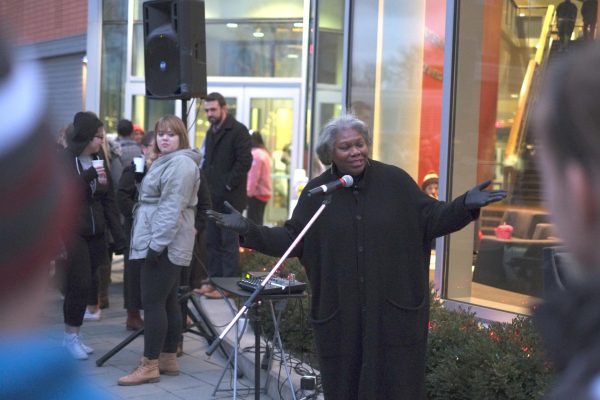
The decision to not renew Lopez Prater’s contract for another semester was made by the then chair of the Studio Arts Department, Allison Baker, and the Dean of the College of Liberal Arts, Marcella Kostihova. However, Hamline’s wider administration, including Miller, was held responsible for the suppression of academic freedom in the classroom as well as for the inadequate response to student’s concerns by national media and campus alike.
Miller holds fast to the sentiment that academic freedom has never and will never be at risk of censorship or suppression.
“In all my years in higher ed, I have never negatively impacted anyone’s academic freedom,” Miller said. “Never. I wouldn’t be in this position if I had. Never have I done that. If you don’t like me, for some reason, own up to that, but don’t accuse me of something and be concerned about something that never happened here at Hamline.”
In Sept. 2023, almost a year after the initial incident was reported, Hamline hosted yet another panel of experts to discuss the intersection of academic freedom and cultural differences, inviting scholars such as Robin DiAngelo, Stacy Hawkins, Tim Wise, Hamline’s Dr. David Schultz and keynote speaker Dr. Michael Eric Dyson.
During this symposium, Miller clarified that the purpose of the event was not to dredge up the past but rather to focus on the future of Hamline. Panelists followed Dyson’s keynote speech to share broad perspectives of academic freedom in the classroom, circling the specific incident at Hamline without directly referencing the specific events. It was not until the open mic portion of the symposium that the events of the previous year were directly acknowledged by attendees.
Miller was the last speaker of the open mic portion of the event, ending the conversation a half hour early and once again affirming that she has never impeded anyone’s academic freedom.
“With academic freedom comes academic responsibility,” Miller said in an interview with The Oracle in Oct. of 2023. “They’re not independent of each other. They coexist. And that academic responsibility is what you teach, who you teach. and how you teach it. … You have a responsibility to teach your students in ways that allow them to think critically [in a way] that doesn’t exclude anyone in your classroom.”
Faculty members in attendance expressed frustration with the lack of tangible changes proposed, and student representation was extremely low due to the timing of the symposium aligning with the middle of the work day.
Hamline’s Faculty Council voted in an emergency Faculty of the Whole meeting on Jan. 24, 2023 to ask President Miller to step down as university president, with 71 of the 92 faculty voting in favor. On April 3, an announcement to the campus informed the community of Miller’s retirement, effective June 30, 2024. Interim President Kathleen Murray was introduced on Nov. 1 in a campus-wide email from the Board of Trustees, and is set to begin her role in Jan. 2024 as Miller begins a semester-long sabbatical.
“I’m not leaving because the faculty told me to resign, I’m leaving because I didn’t want to harm this community,” Miller said. “That’s why I’m leaving, and because I need to be with my family. You don’t want to harm the community, and if people see you as the harm, as the threat, as the problem, I don’t want to see people view Hamline in a negative way because they see me as a problem. I’m not a problem. Never have been.”
On April 3, 2023, President Miller announced that she would retire in June 2024.
Departing on these terms is not ideal for Miller but the controversy has compelled her to return to Vermont to be with her husband, from whom she has been living apart from for the entirety of her time at Hamline.
As the current president reflects on her time at Hamline, Miller hopes Dr. Kathleen Murray will take advantage of her opportunity as interim president to get to know the Hamline community.
“I want her to take the time to get to know this place, even though I know she doesn’t have time, her window is short … but to see what an incredible institution Hamline is,” Miller said.
Dr. Murray starts work as interim on Jan. 1, 2024, and inherits complex social and financial disputes within the university. Miller encourages Murray to serve the best interests of the university, and prepare to face backlash.
“[Murray]’s gonna have to make some hard decisions, but she can’t take it personally,” Miller said. “She will be criticized for them, but don’t take it personally. Just do the work that needs to be done for the good of this institution.”
The relationships she has made with her staff and students is what Miller says she will miss most, and the words she leaves Hamline students with are words of empowerment.
“I want the students to go out and do the things that they want to do, with the knowledge that they have what it takes to succeed,” Miller said. “Never doubt themselves. That’s what I want to see, because when students rise, we all rise. When you do well, we all do well.”
Miller’s career has taken her far and wide, and her perseverance has carried her through prejudicial barriers many of us have only known as broken. Despite the tumultuous end to her career at Hamline, Miller’s devotion and affection for the university are unshaken.
“I love this place. I love the people who are affiliated with this place, and I’ve given my heart and soul to Hamline. I don’t want my legacy tarnished,” Miller said.
With reporting and research contributions from Cal Athmann, Ben Rosenberg and Cathryn Salis.


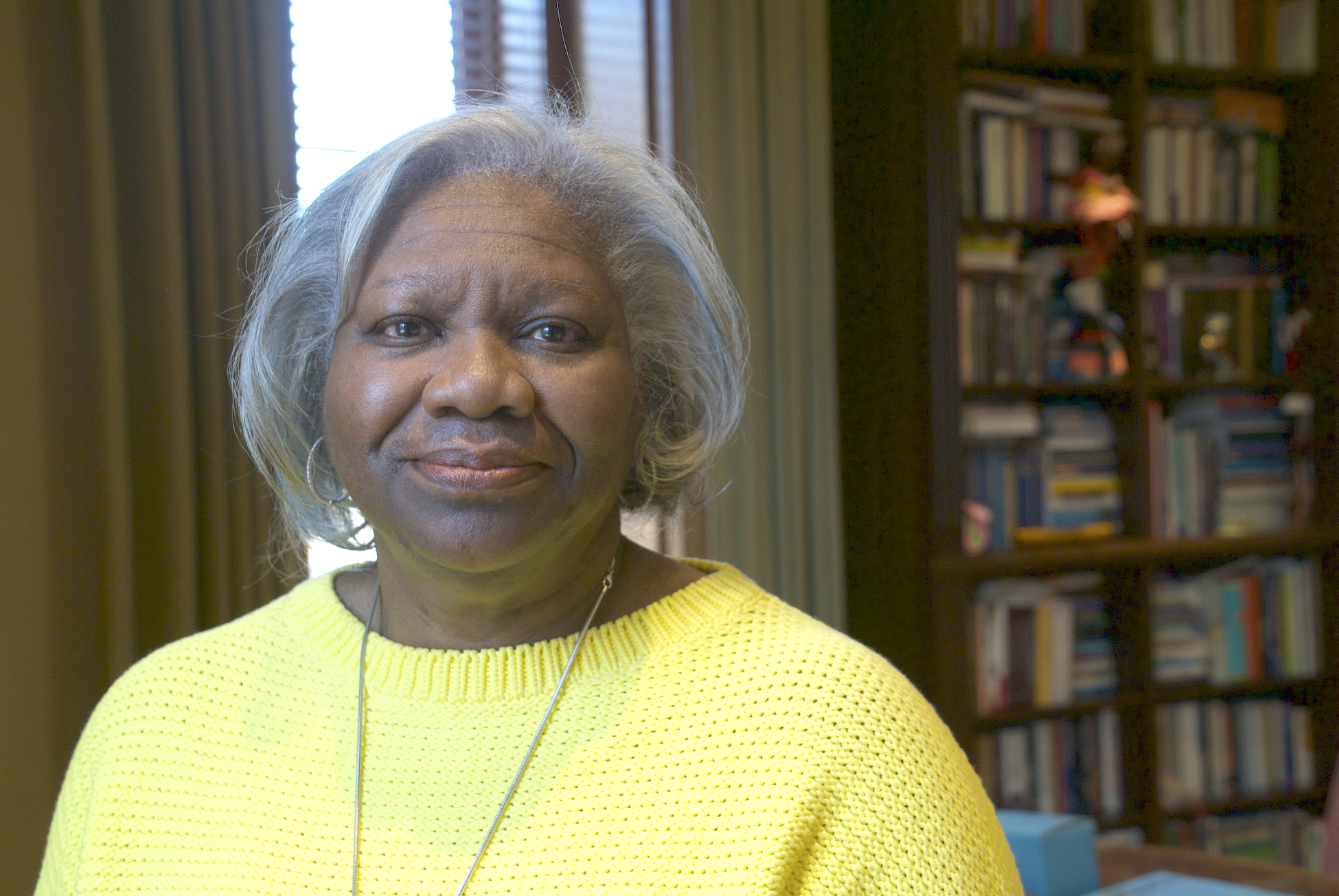

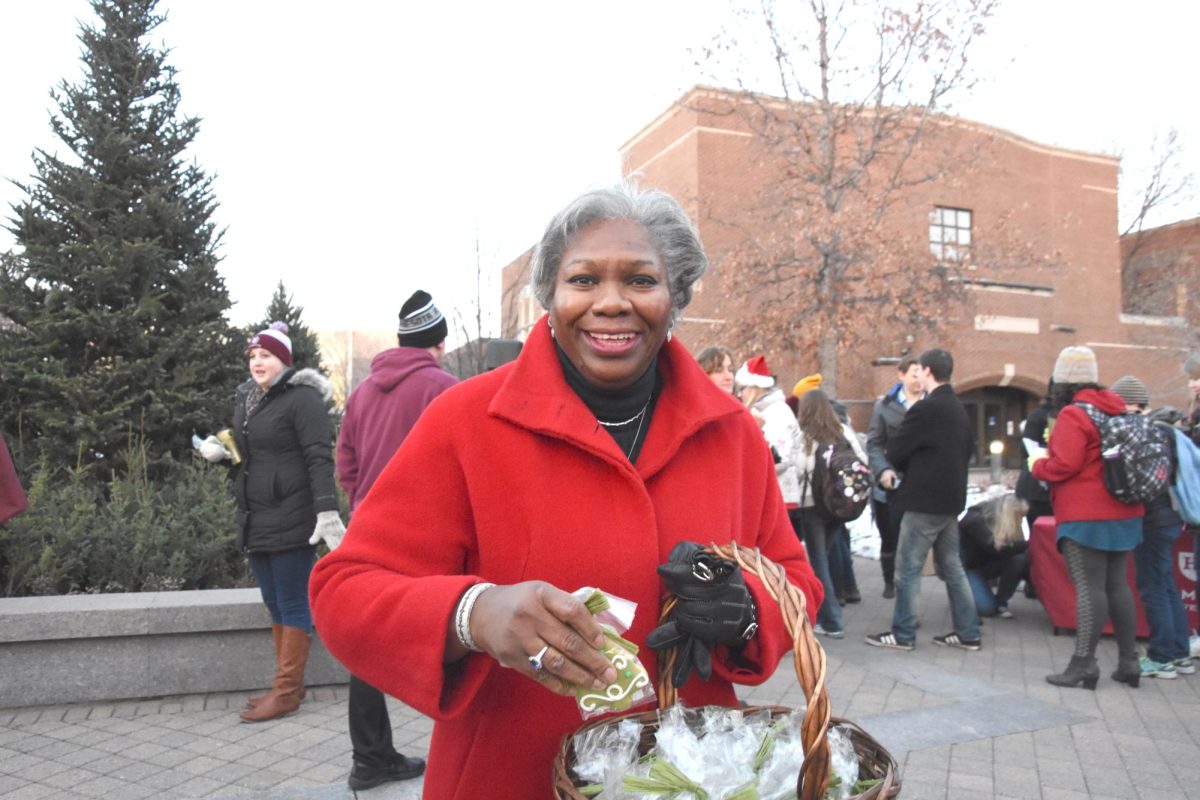
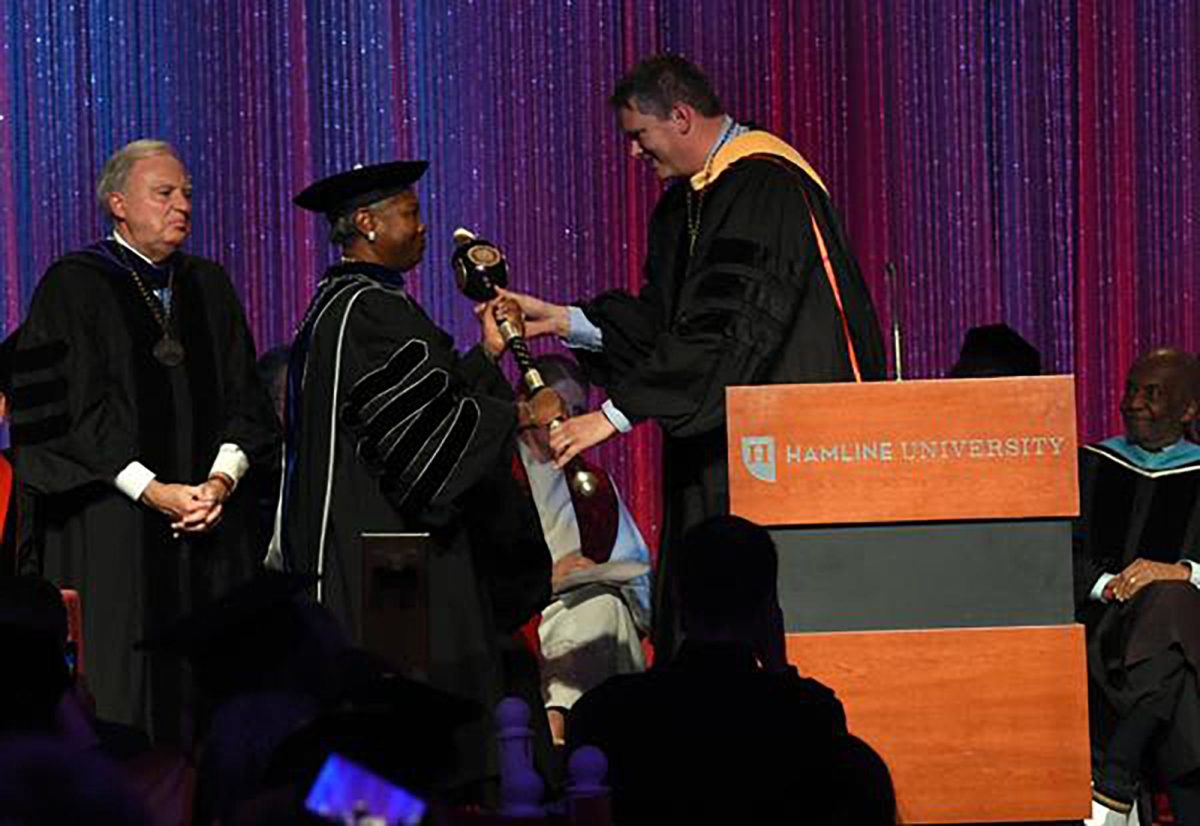


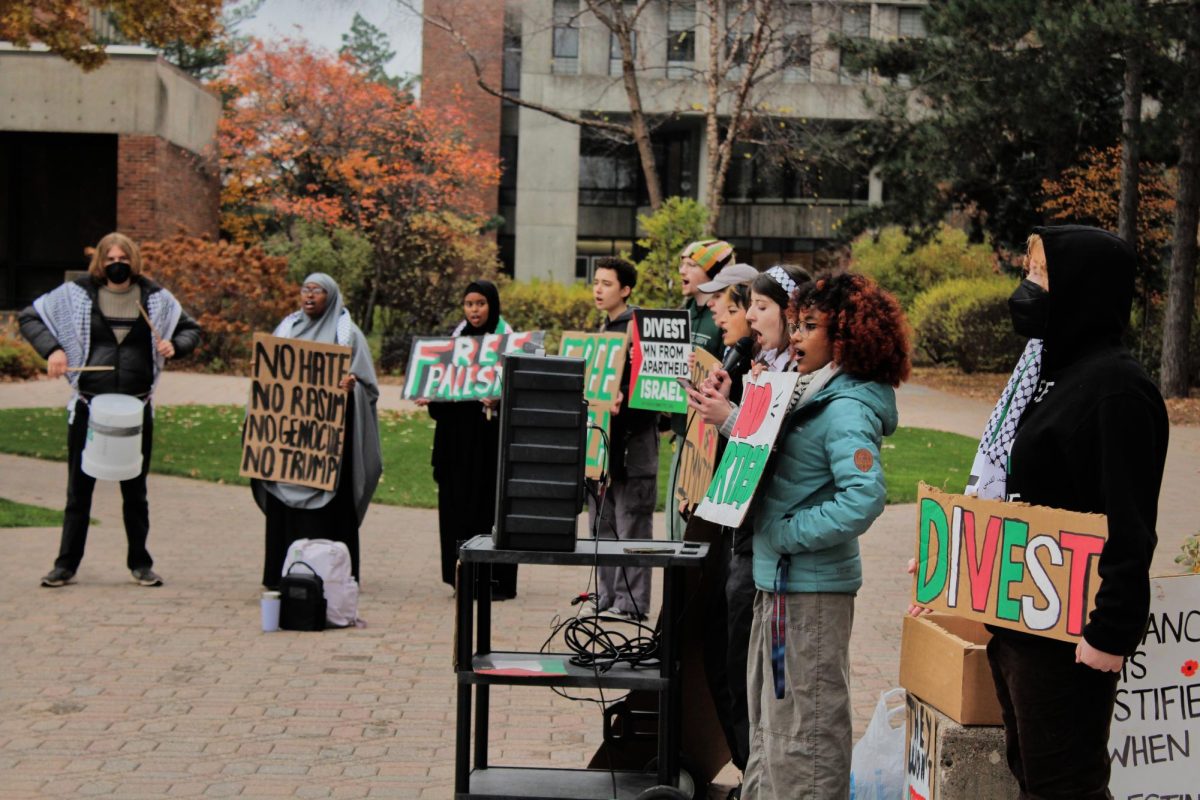

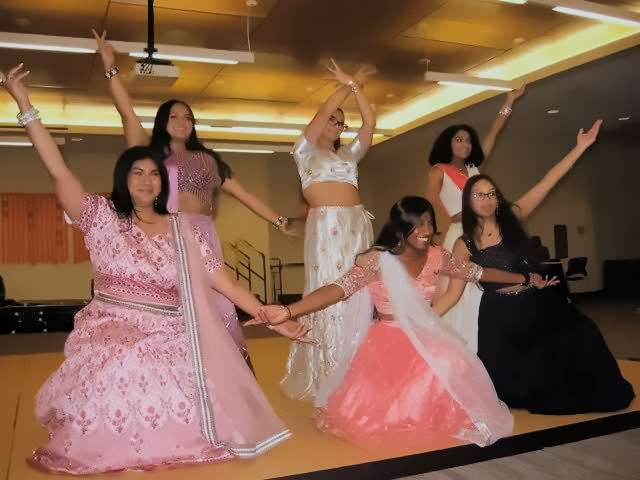

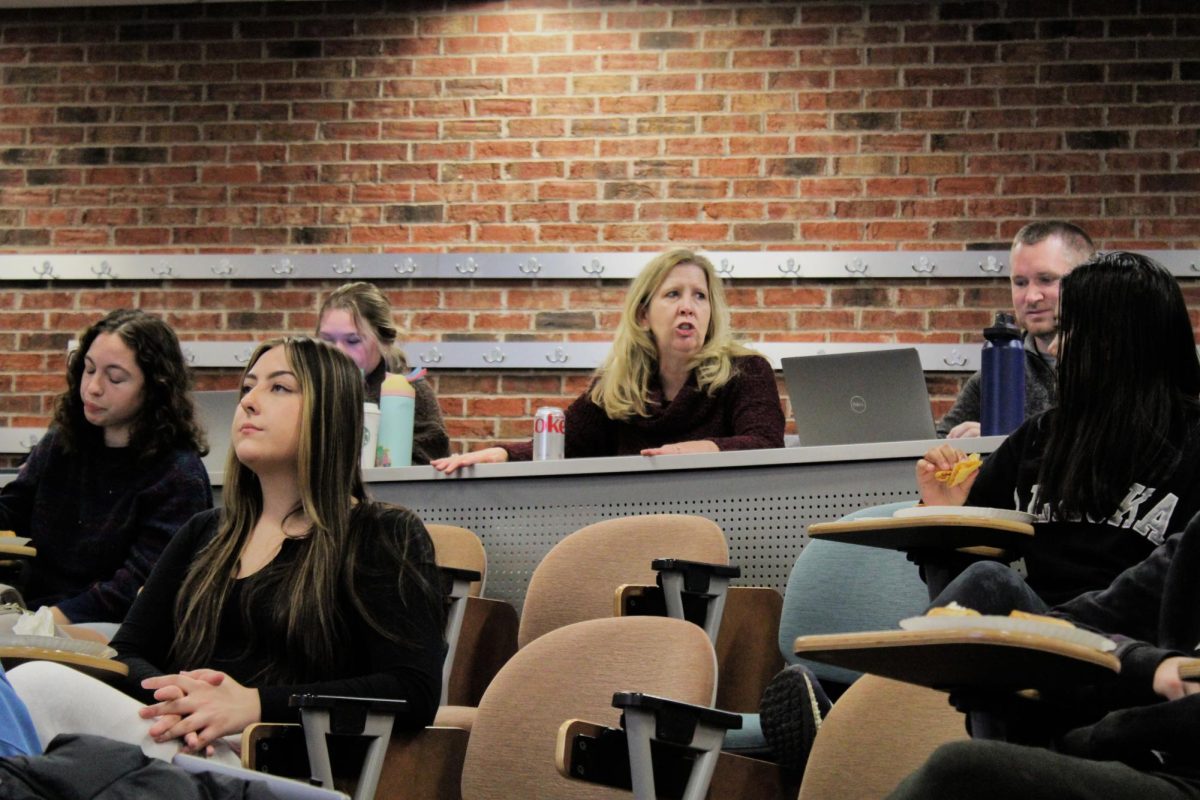
Concerned Hamline Grad Student • Jan 20, 2024 at 11:58 am
Good riddance! Fayneese Miller put a stain on this university seen all around the world. Frankly, this should have happened over a year ago. It should have happened before the faculty even put forth their statement urging her to resign.
Vice President of “Inclusive Excellence” David Everett should also be out. He was the first one to communicate and spread the lie that attacked both Dr. Lopez Prater and academic freedom as a value itself before Miller decided to double down, triple down, and never stop repeating, even right before she was out.